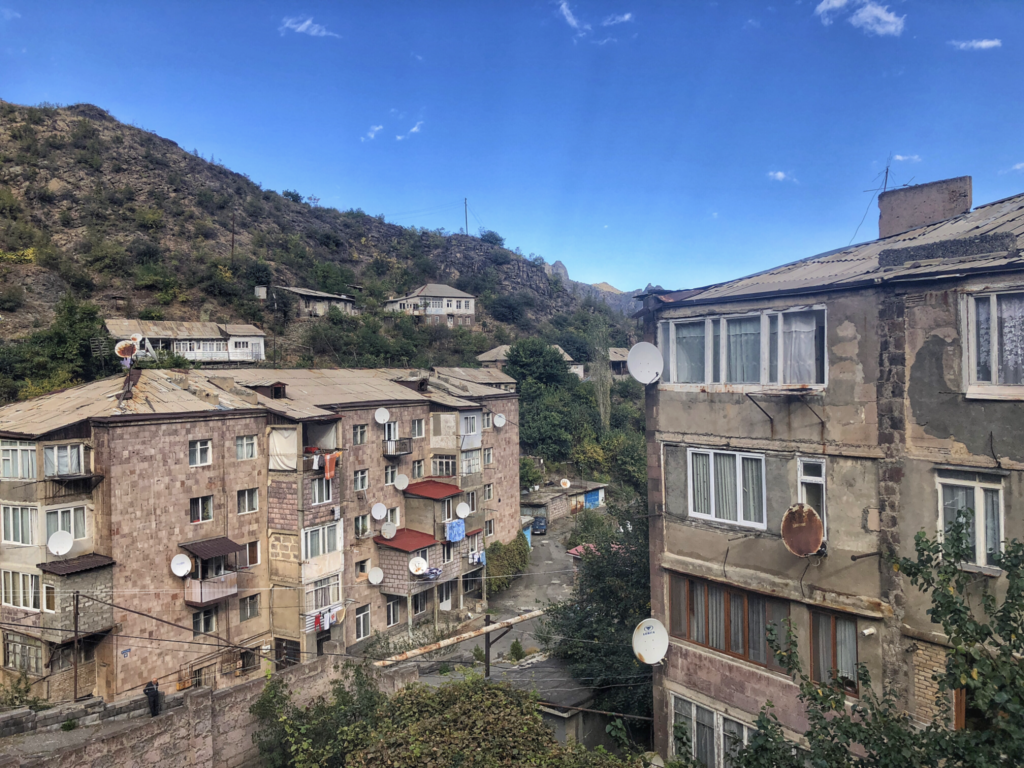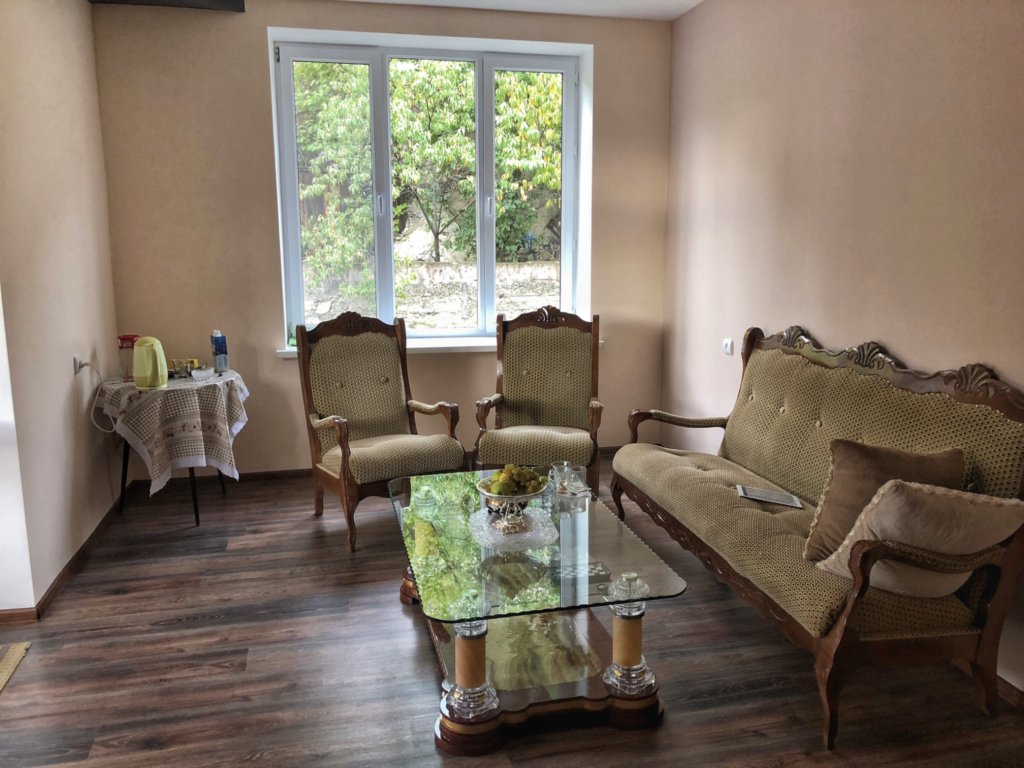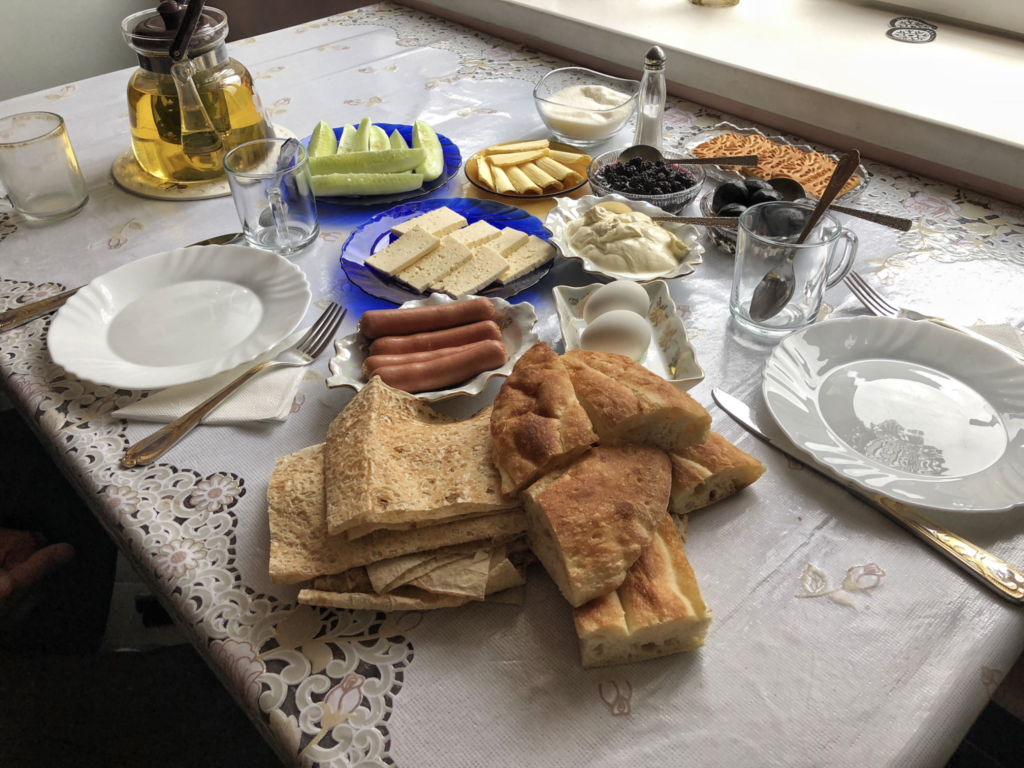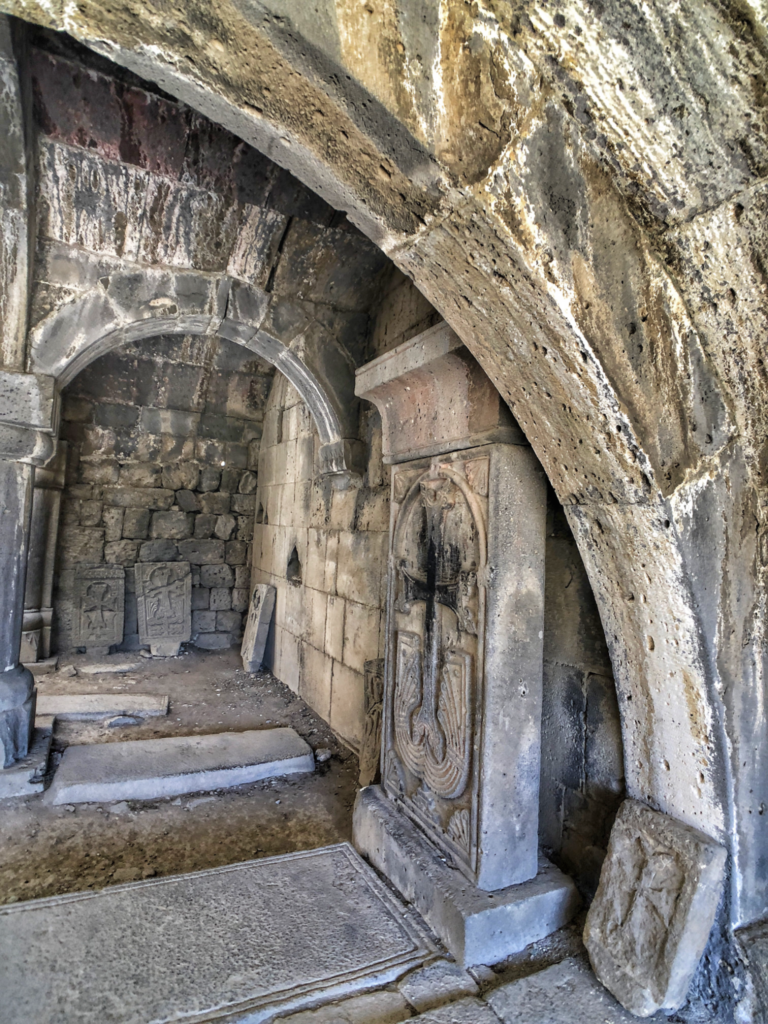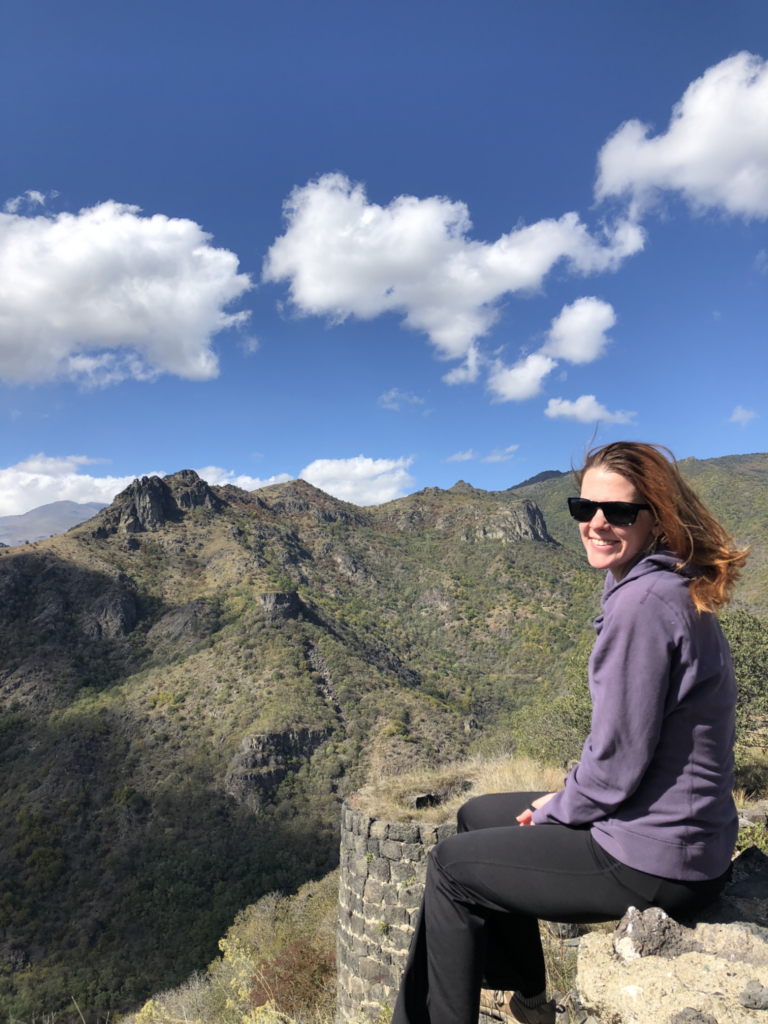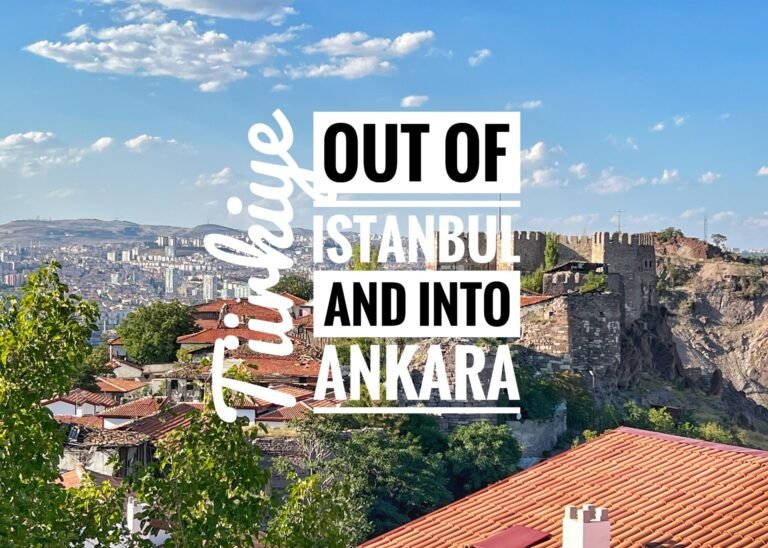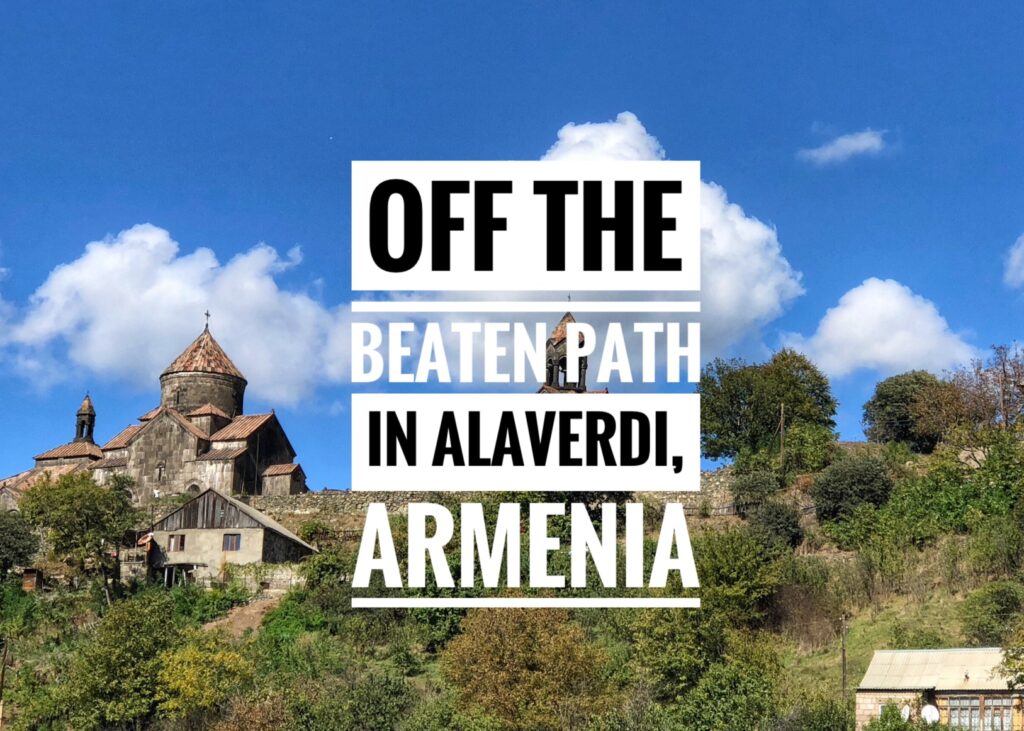
As we barreled south of the Georgian border into Armenia in our mini bus (which we got overcharged for), the terrain became drier, the sun more intense, but the road equally bone shaking, as it continued to wind tumultuously through the mountains. It was a relative easy border crossing with only us, some locals and two Asian ladies whom our driver simply referred to as “Where China?” when they got held back at the border for questioning because they had recently been to Azerbaijan. This was our first introduction to the strife that still exists between the Azerbaijanis (Azeris) and the Armenians…

Needless to say, when we arrived completely rattled to the little town of Alaverdi, we were thrilled to get off the grand-prix mini bus and get to our accommodation. Alaverdi is a small town, population 30K, so we figured it’d be a quick walk. Well, unfortunately according to google maps, “Alaverdi” was split between two groups of buildings, separated by a 400’ cliff. The lower Alaverdi which we landed in (actual Alaverdi) and an upper one. Google showed our accommodation to be in the “upper” Alaverdi; only a 1 1/2 hour walk up switchback roads with our backpacks. A cable car existed as an alternative however, (a commuter carriage for miners) that ran between the two Alaverdi’s. What an opportunity for a stellar arrival into town… by cable car! So of course we made a beeline to the cable car, by local bus.

The bus that pulled up looked straight out of the 1950’s. Amazing! When we hopped off and approached the cable car we noticed that it looked quite ramshackle, and more importantly, (?) it was not moving at all. And nobody was around… We found out later, it was struck by “an unusually large bolt of lightening” four months ago and has sat inoperable ever since.
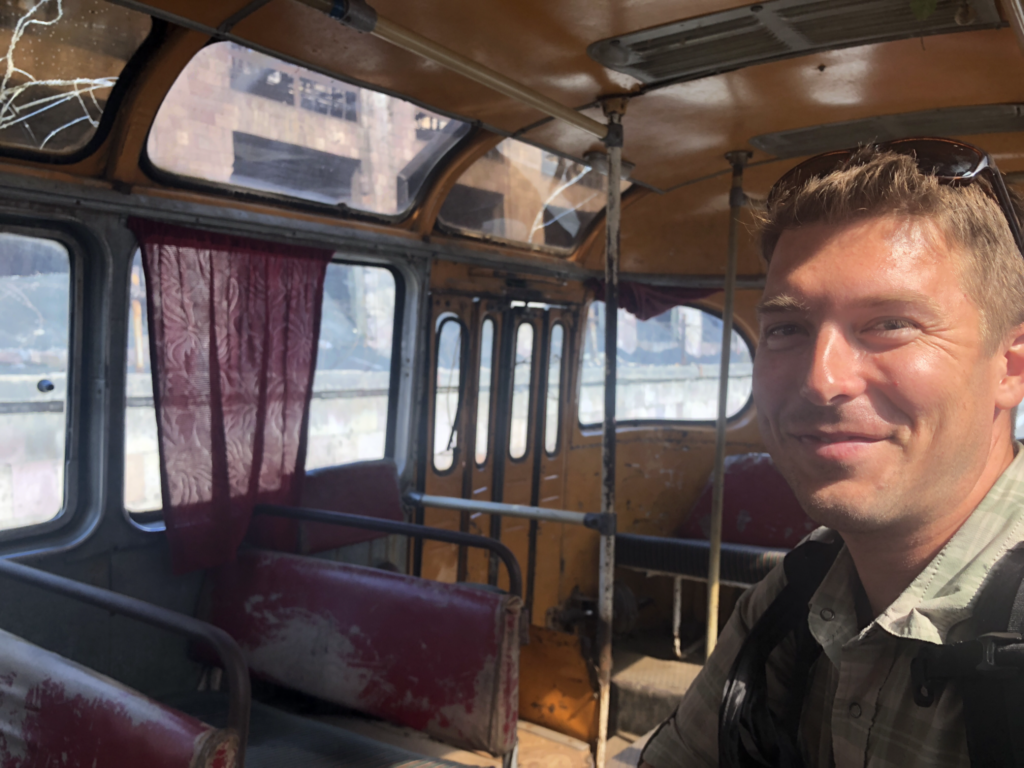
Giving up on our fantasy cable car arrival into town we grabbed the first taxi we saw and Parkev, our driver, naturally immediately wanted to give us “good price” to visit all of Alaverdi‘s prime attractions… the five nearby monasteries. (Yes, monastery-hopping is a common Armenian tourist activity.) We politely declined and said maybe tomorrow. Not giving up, he continued to babble “good price, good price” as he gunned us up the hill to a hotel near to our Airbnb, which was the address we gave him to make it easier to find. Instead it ended up creating a mountain of confusion when we arrived, and that hotel’s manager came out to welcome us, thinking we wanted a room, when in fact we weren’t staying there.
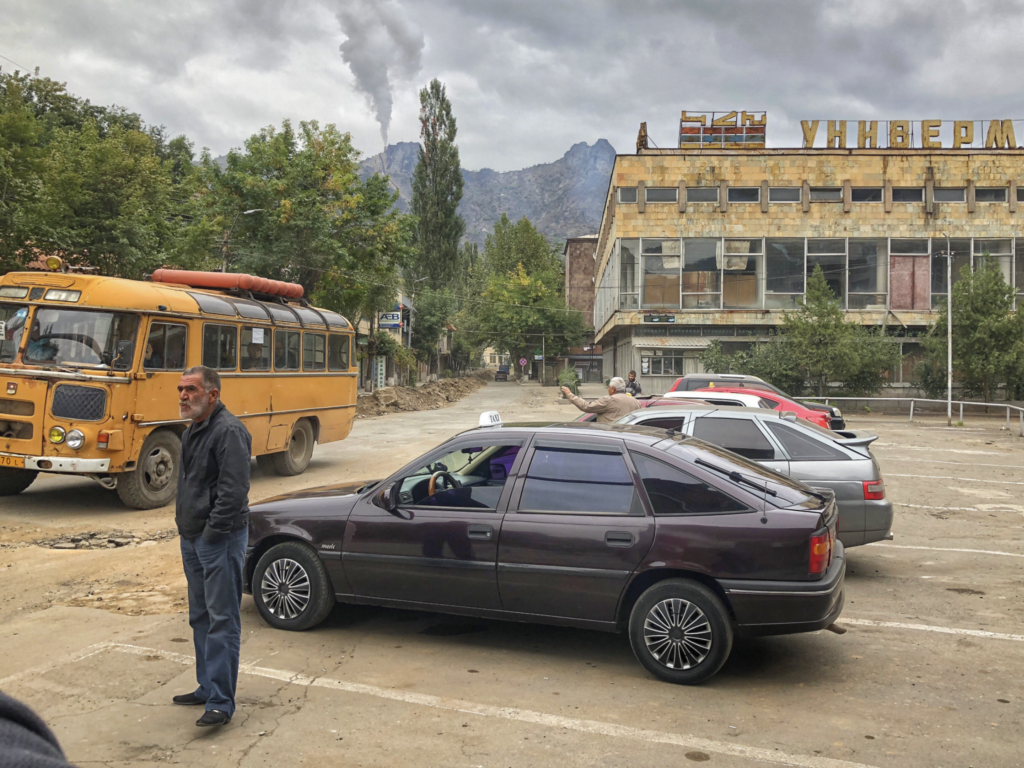
Long story short, we had a cluster of about four Armenians standing around us trying to help us to our actual accommodation…which we eventually realized was in fact…in the other Alaverdi…down the cliff. Where we had started! Back down the hill we went with Parkev still babbling about monasteries and “good price” for the next 20 minutes, when we simply wanted to get to our place. About 30 minutes later, through two more stops for directions, and wrong turns, we finally made it. It was about a 10-minute walk from the cable car where we had started. Google! FAIL!
Fortunately our Airbnb, which has been converted from a kindergarten to a hostel, was absolutely lovely once we went through the debacle of finding it. We had a full living room, huge balcony, bed and bath to ourselves. Our amazing hostess had left us bowls of fruit and the very popular Armenian candies, called Confets. These candies are interesting with a hard shell and creamy center. The labels are completely ambiguous as there’s no indication of what’s inside. So it’s trial and error. The first one we tried had a picture of a lobster but tasted like butterfinger. Hmmm….

After settling in, it was time for dinner. Fortunately on one of our earlier missteps we had landed with a nice lady who had given our taxi driver directions and said to “come back later for restaurant.” So we happily returned and let her cook our first Armenian meal featuring Dolma, a delicious herbed meat concoction wrapped in cabbage leaves (they also make them with grape leaves in the winter months.) Btw, this restaurant happened to be the only one of two unlabeled restaurants in Alaverdi. The other one, we had to search for about an hour the next day to find. Clearly, Alaverdi is not booming with tourist services just yet…
The next morning we awoke ready and rested for our next adventure, but not without a delicious Armenian breakfast. We were delighted to be back in the land of thick, creamy Greek yogurt and to be introduced to the most mystical little black egg-shaped wonders…spiced, candied walnuts. Mandy kept repeating over and over that they “tasted like Christmas” with hints of cinnamon, clove and nutmeg. Somehow they cook the nut with the outer shell and flesh intact… it all comes out soft and chewy, and amazing!

Walking through Alaverdi on the way, we walked through the local market stocked with fresh fruits and vegetables.
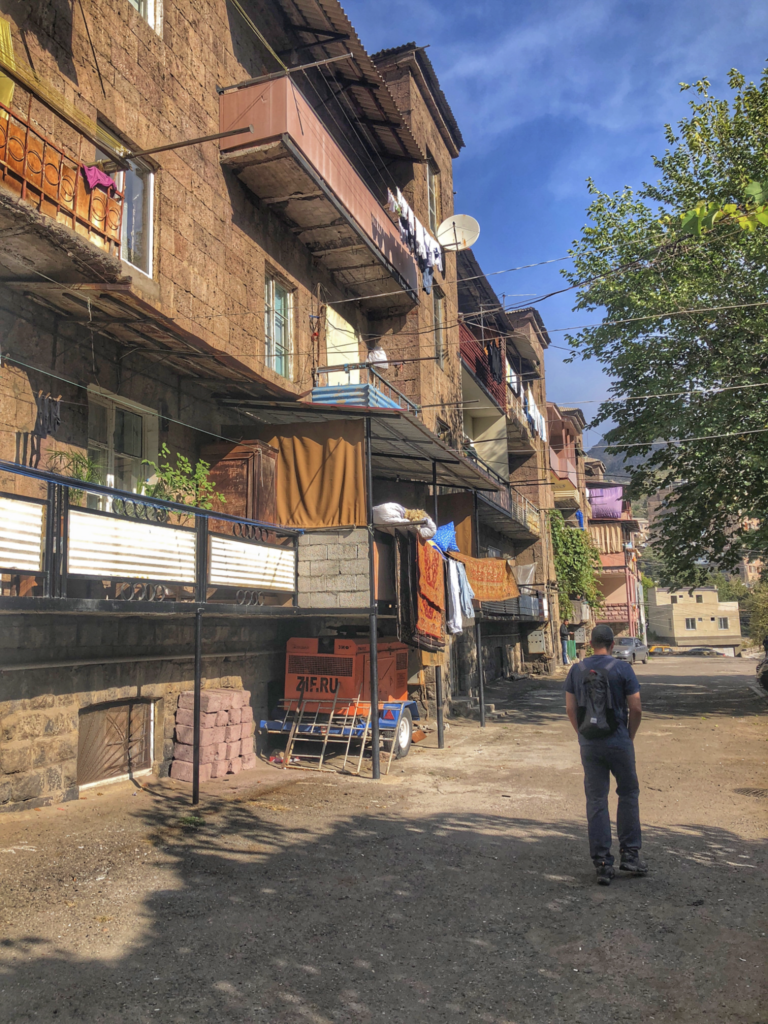
Street scene Alaverdi.
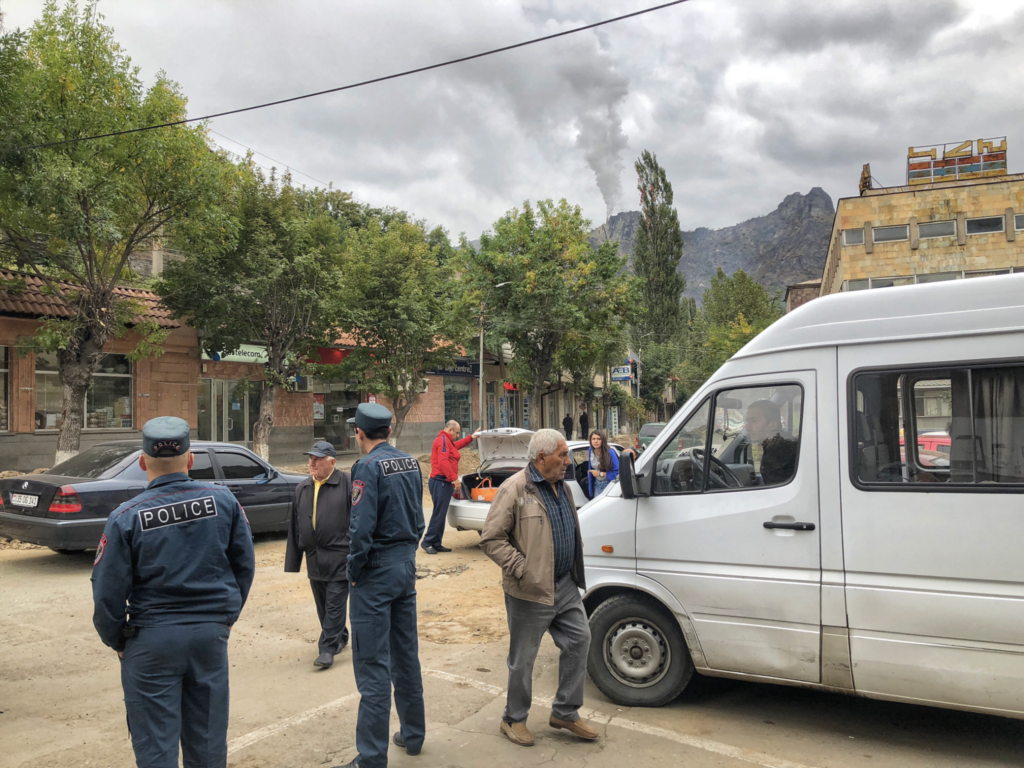
We then returned to the “bus station” with that day’s destination written in careful Armenian script by our hostess on a helpful piece of paper. She insisted it was easy to take a local bus and reiterated what we already knew…that the taxis would overcharge. So we waited….and confirmed the pick-up location….waited and confirmed…all while dodging the “good price” taunts of the taxi drivers.
And then, as we waited….guess who arrives? Parkev! Our driver again…sigh. And off he went… “why you not call me??” With no bus in sight and the day slipping away we finally caved and let him drive us to the first monastery and explained slowly to him that we wanted to walk from there using the universal “moving fingers” as a sign for walking. (Our plan was to hike from one monastery on an old monks trail.) Yet, Parkev did not understand the concept of WANTING to walk. Over and over and over he said “walk no good!” And “mister I give you good price… I good driver” Eventually we shook him at our destination, Haghpat Monastery, and were able to start our day at 11 am.

We had arrived at Haghpat Monastery, an UNESCO world heritage site built in 976 AD. The name means “huge wall” owing to its fortified walls and position set high up on the dramatic Debed canyon walls
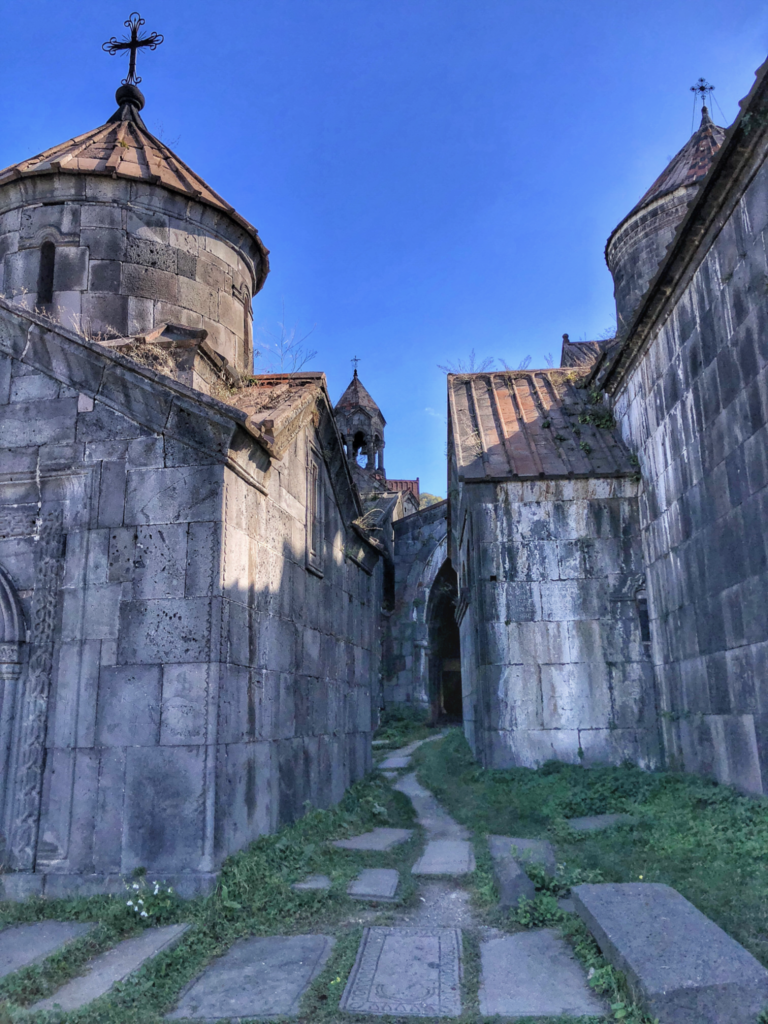
Another view…
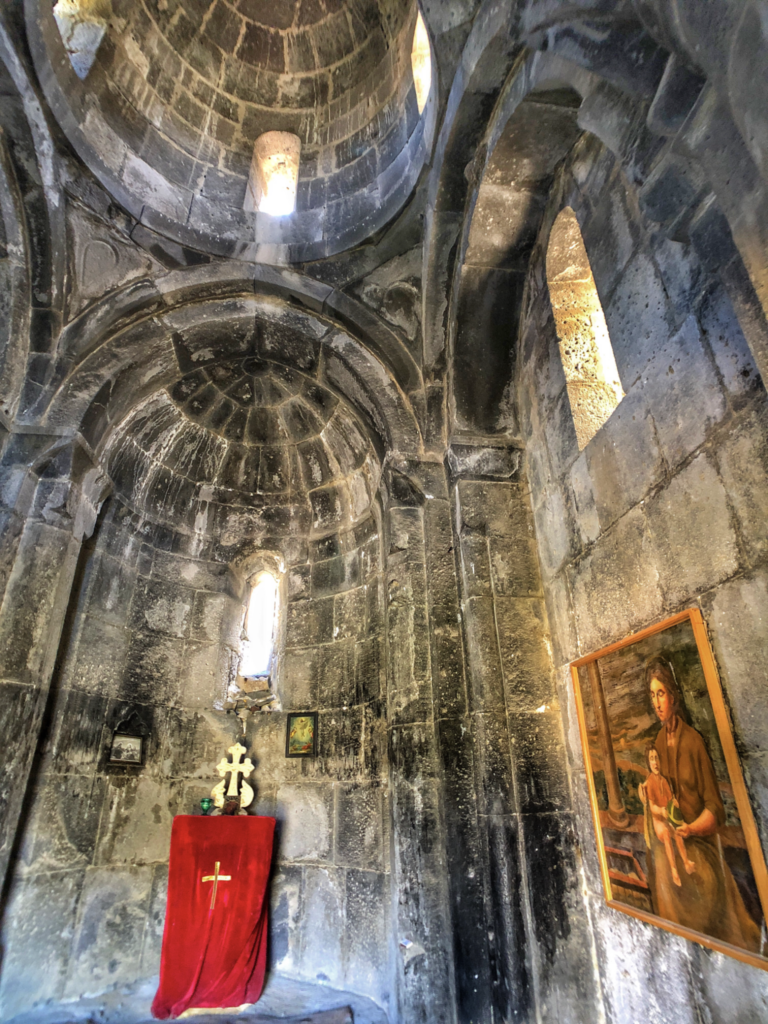
It was almost empty when we arrived and went inside… to the point of being eerie; the acoustics inside the church reverberated our voices several times over making us stop in wonder at this architectural marvel and its construction using huge blocks of rock stacked to create a dome that was three stories high, and all from over a thousand years ago. Inside was also very plain and simple, no gold or ornate and elaborate reliefs to look at… just a simple altar and a truly tremendous amount of stone craftsmanship in the giant pillars, and arches upon arches to create this incredibly historic structure.
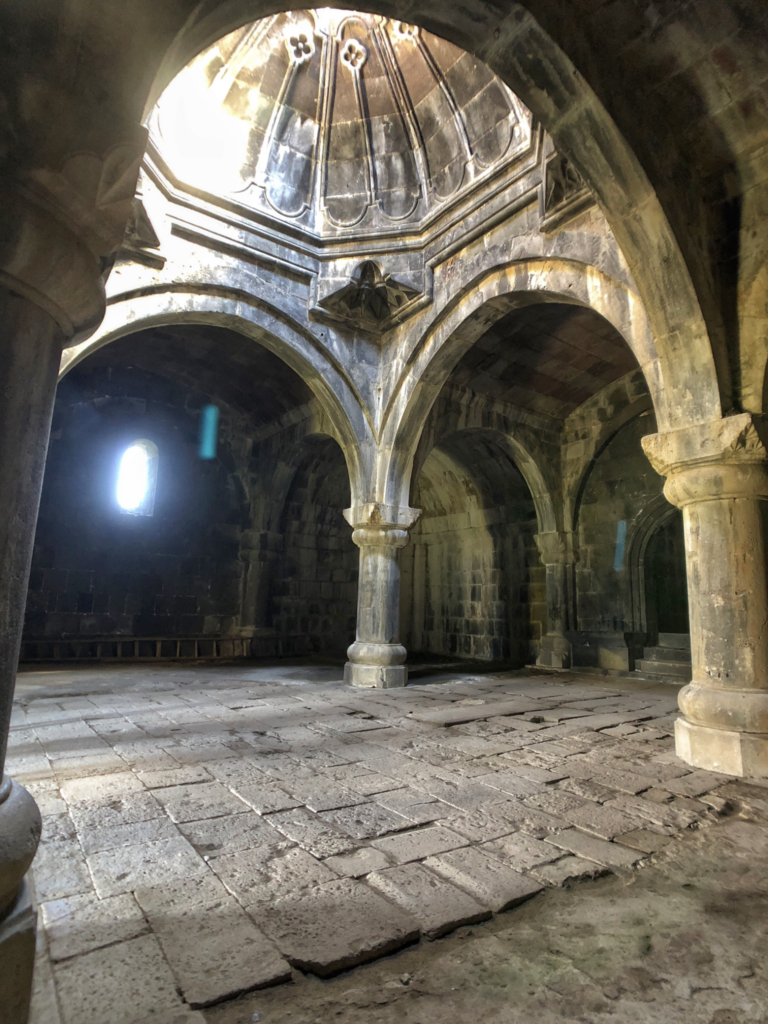
Beautiful arches and forgotten tombs were plentiful.
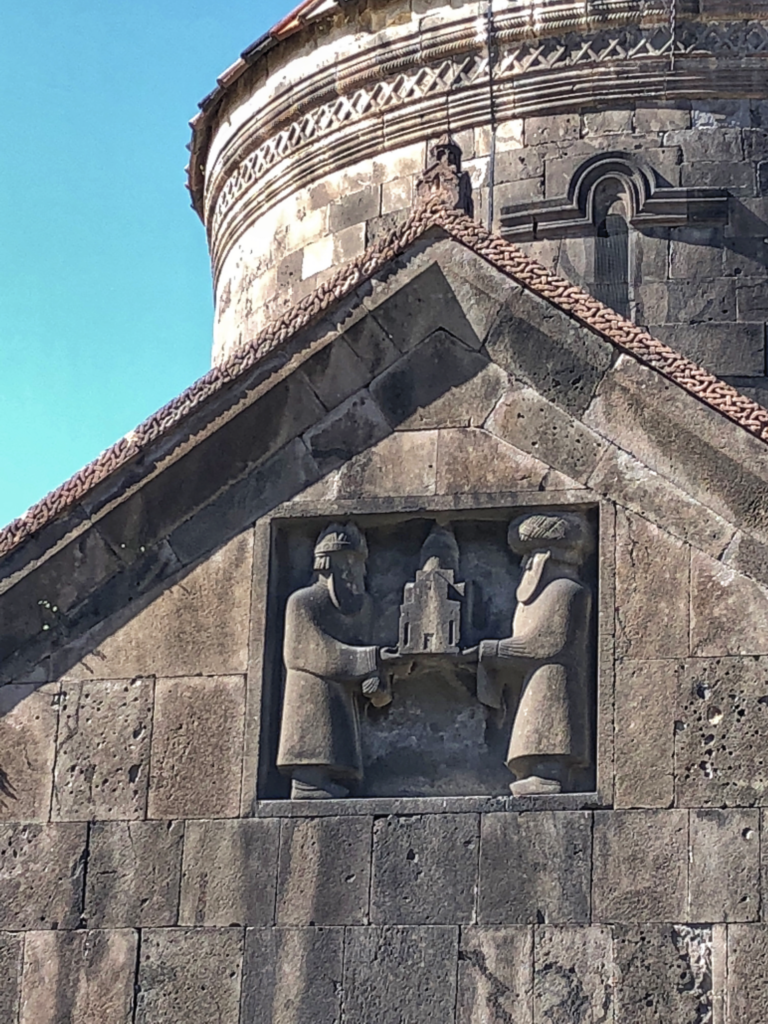
An intricate details. Look at the tiny version of the monastery they are holding!
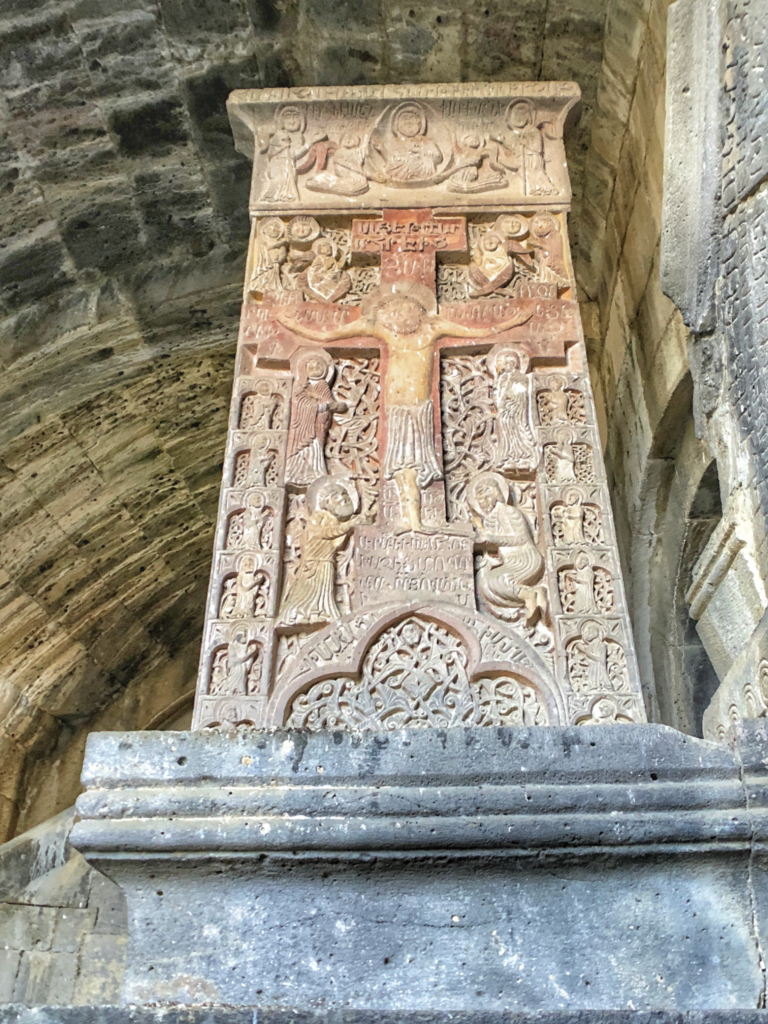
Khachkar are a uniquely Armenian cross-stones that are found in mass quantities throughout this country, in which 93% are Armenian Apostolic Christians. These steles were created to commemorate people either living or dead, the construction of a church or a particularly notable military victory. They have been designated on the UNESCO cultural heritage list. Many were created in the medieval period especially between 12th and 14th centuries.

The holes in the floor are remnants from vessels for winemaking.

The frescos were still very visible.
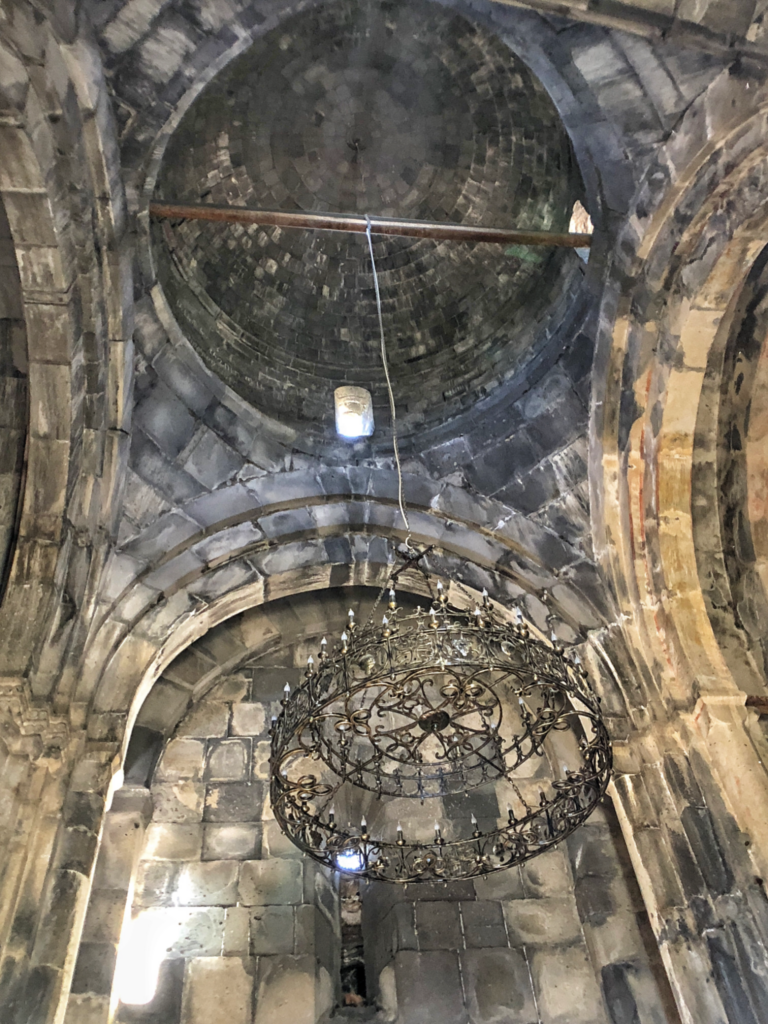
The main sanctuary.
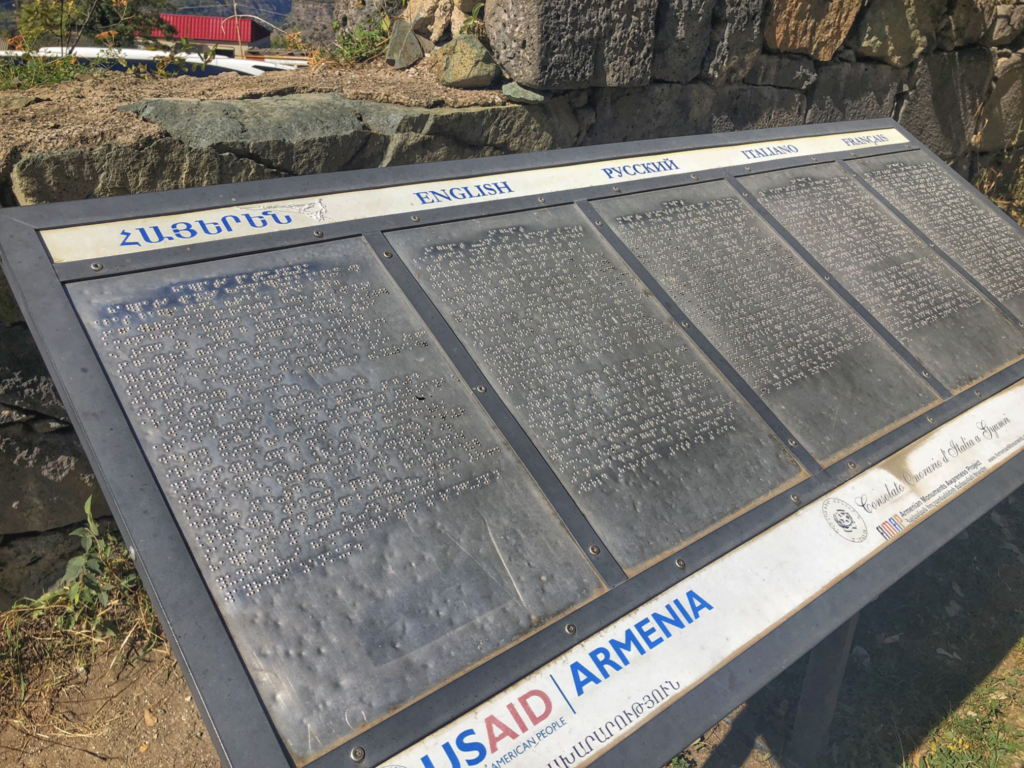
It was good to see US Aid investing money to the preservation and needed improvements of this place. We found this sign, explaining the site, written in Braille in five languages particularly interesting.

It was time to begin our 7k walk in the countryside where we would see the next monastery of Sanahin. We ran into lots of chickens and cows on the trail, but no people.
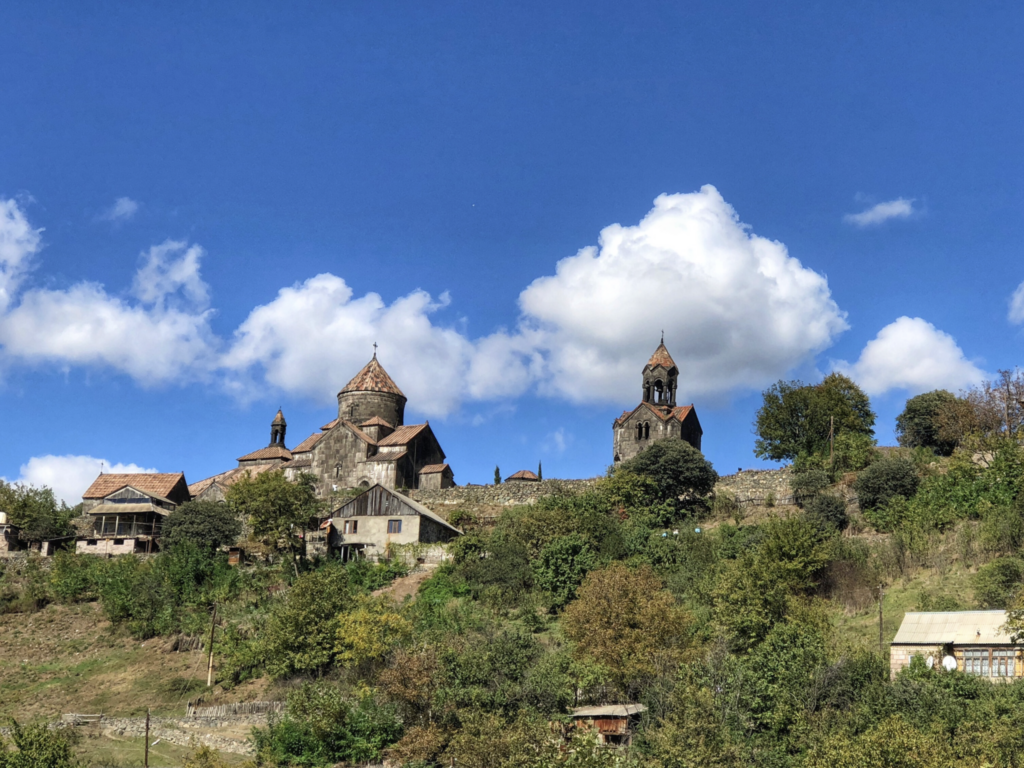
The view of Haghpat Monastery from the trail.
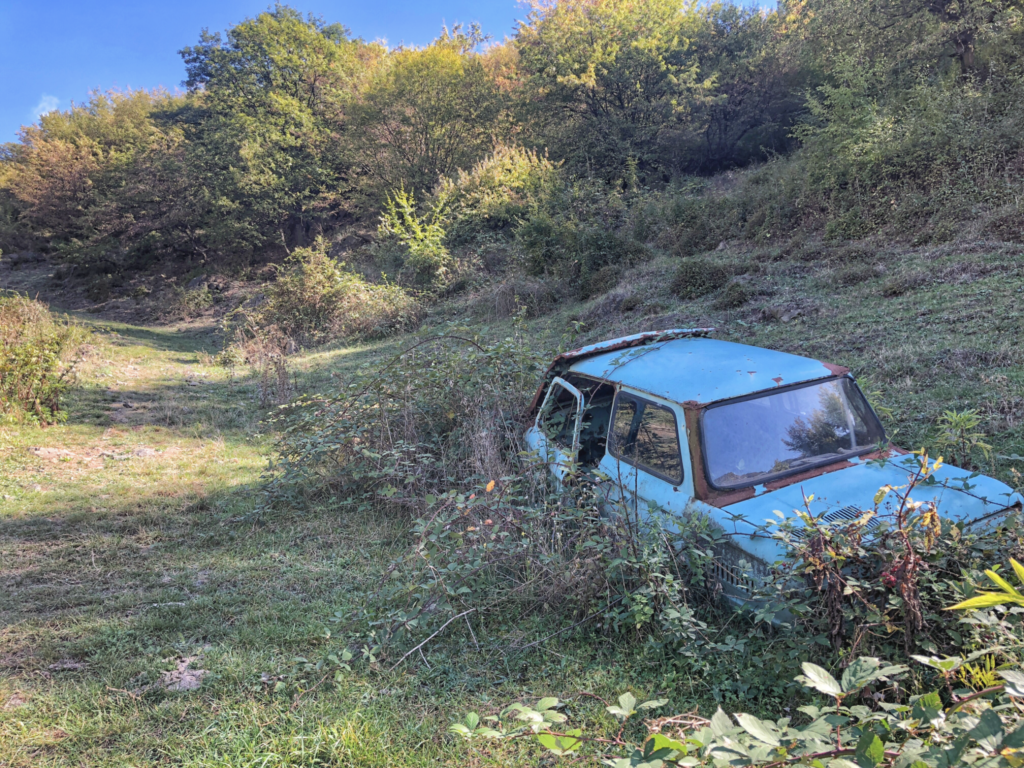
An abandoned Lada car sits beside the trail…time to bury the USSR.

Looks like a very tiny version of a hummingbird but is actually a moth…fittingly named a hummingbird moth. They were everywhere! Fascinating little creatures!
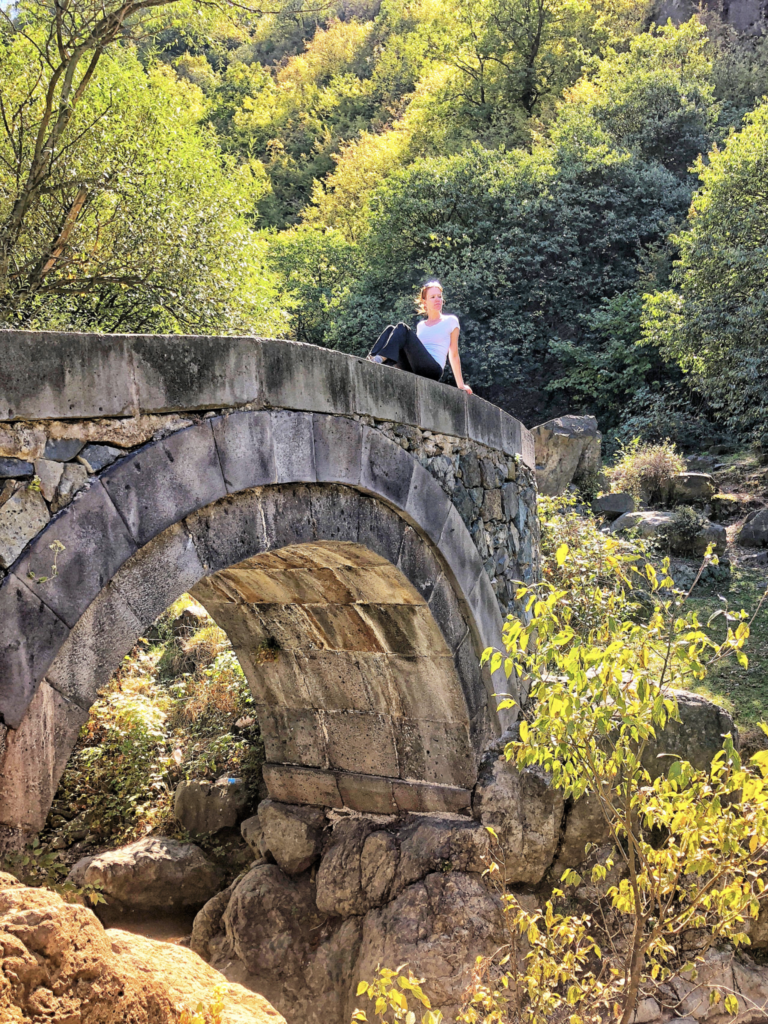
Mandy tests out a centuries-old bridge built by the monks on the trail.
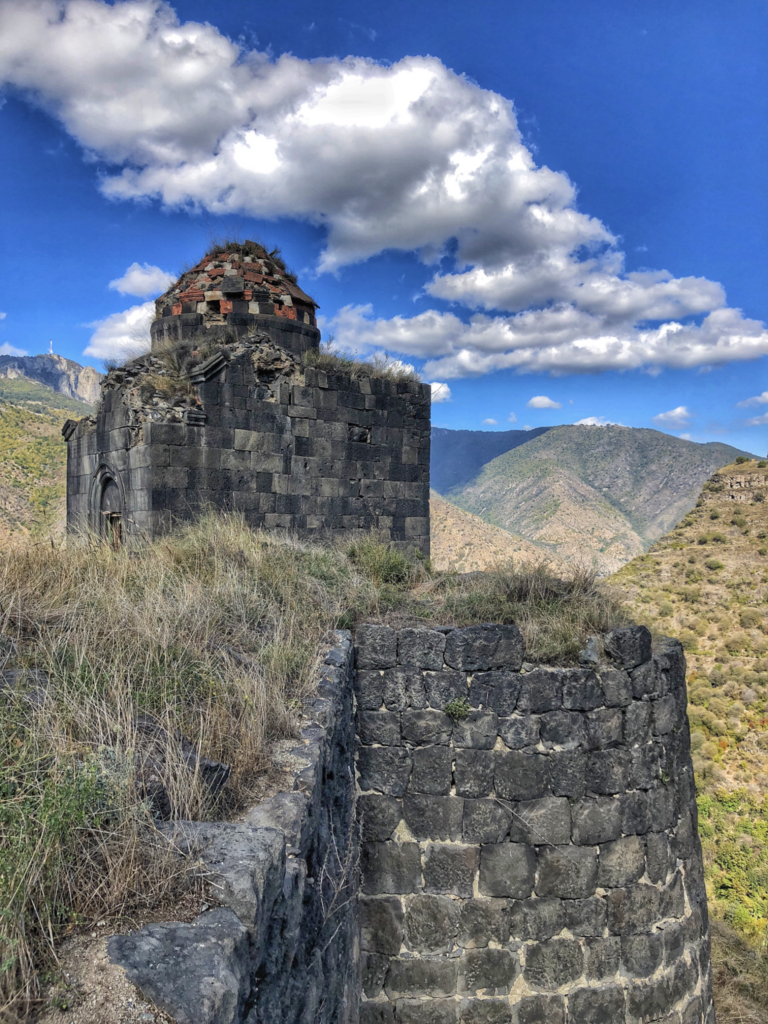
The path continued up the ravine and we stumbled upon a mysterious structure… the completely off-the-beaten-path ruined fortress of Kayan Berd, perched precariously on the edge of a point in the gorge with several hundred foot drops on both sides.
So of course we had to check it out. What a find! Amazing place, in an incredibly dramatic setting, the fortress lay in ruins (we later discovered it was built in 1233), completely untouched for who knows how many hundreds of years now after being destroyed by the Tartars, with rock walls that were easily 20-40’ high in places dropping straight down into the gorge, and with an ancient church barely hanging on to existence.

Another view.

Greg walks along the fortress wall.
The surrounding terrain.

And then…we lost the trail to take us to the second monastery, Sanahin. After about a half hour of looking and backtracking we gave up, went back to the main road to catch a ride, and in no time we arrived back to Alaverdi in time to check out Tamara’s Bridge which was built in the 12th Century. A lovely stone arch bridge, amazingly used by road traffic until 30 years ago.
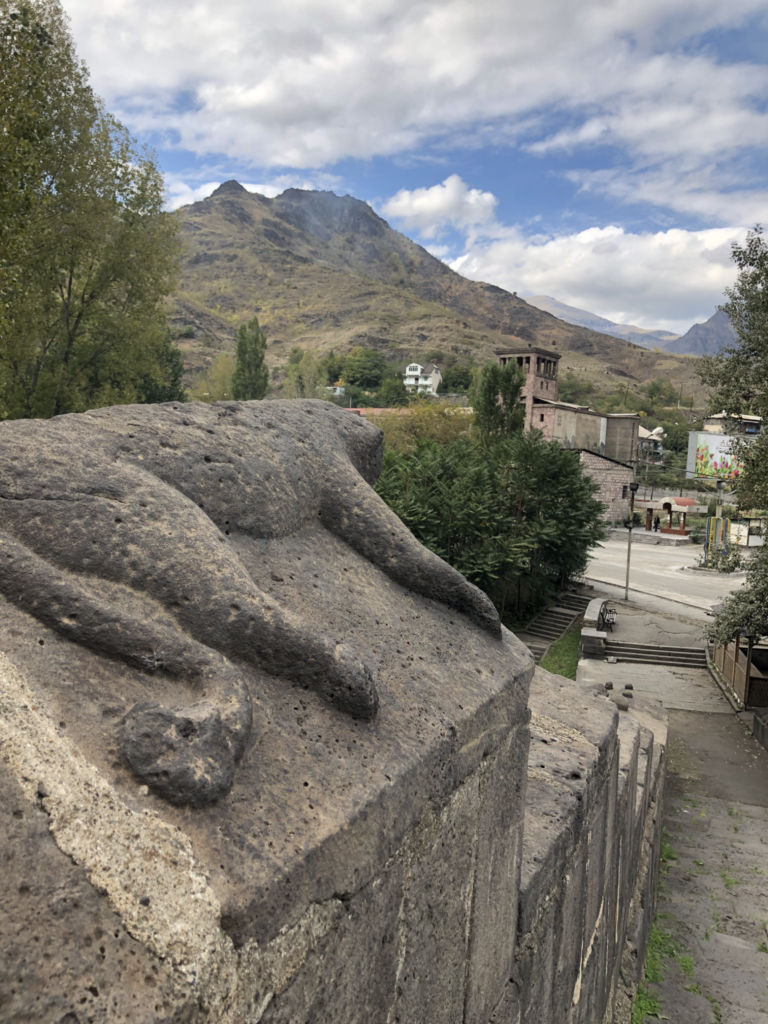
Four kitten-looking lions are carved in the stone railing.

We needed a drink…great! A saloon! Never mind… funnily enough, we found this common mistake multiple times throughout the country. Time to hit the capital…to Yerevan we go!

